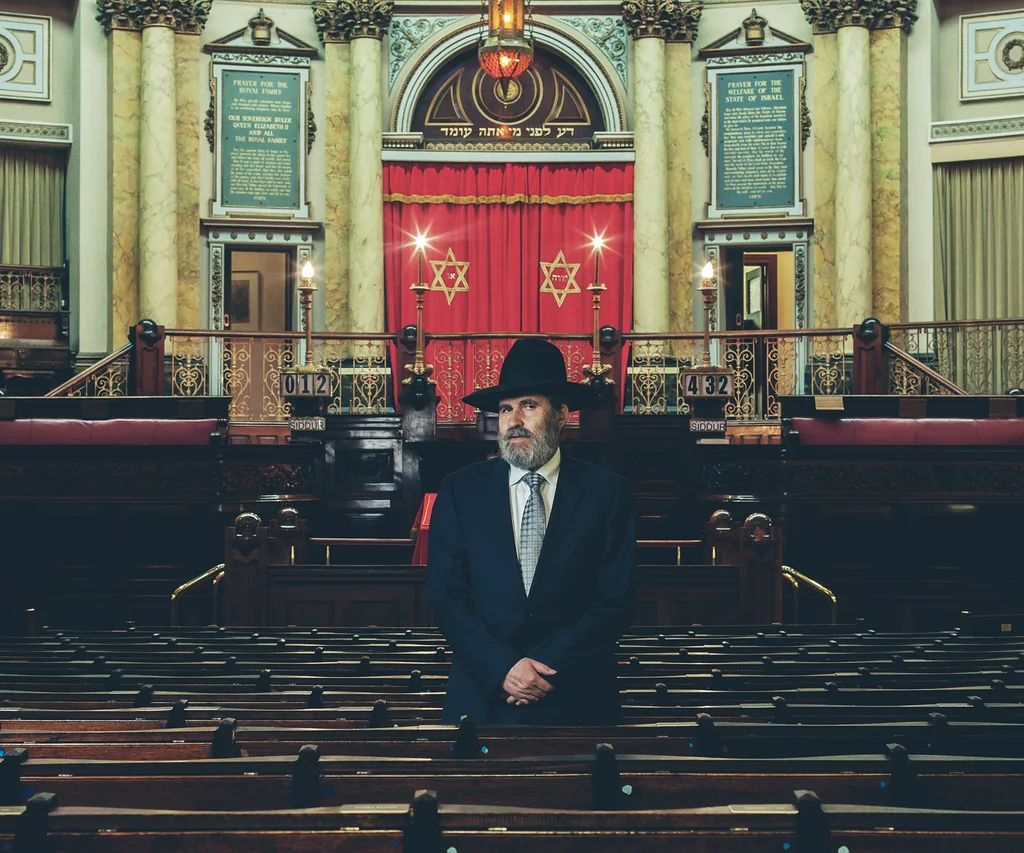Monastery of Panagia Kamariani
Mornington Peninsula, VIC
It’s not quite the Sistine Chapel and Michelangelo himself may not have had a hand in the painting of its dome, but the Monastery of Panagia Kamariani in Red Hill on the Mornington Peninsula is nevertheless a stunning slice of Greek culture in the heart of Victorian wine country.
Father Lefteri, the Greek Orthodox clergyman with 48 years experience, who ministers to a flock numbering anywhere between 40 and 400 depending on the holy day in question, presides over his church with a quiet sense of pride.
As well he might. Made of a stone which was quarried in Mt Gambier and set among a grove of olives planted in the shape of a cross, the church boasts an interior which inspires hushed reverence from all who enter.
The icons – from the depiction of heaven on the ceiling to the prophets from the Old Testament and the solemn parade of New Testament saints down the walls – were all hand-painted by a Melbourne-based parishioner, Anastasia, who spent a good deal of time on her back atop scaffolding realising her magnum opus.
Christmas at the monastery begins with a 7am Mass and involves the singing of Greek carols. Yet it’s Easter when the place really comes alive. Parishioners travel from all over Melbourne to take part in the church services and add their side of lamb to the 20 or so spits that dot the 6.5-hectare property on Easter Sunday.
Local legend has it that you can smell the celebration long before you arrive at it.

Nan Tien Temple
Wollongong, NSW
In the green hills on the outskirts of Wollongong – barely a stone’s throw from the chimneys of the Port Kembla steelworks – a tower of another kind rises from the landscape.
It’s the seven-tiered pagoda of the Nan Tien Temple, the largest Buddhist temple in the southern hemisphere and the spiritual hub of some 2000 practising Buddhists from the greater metropolitan area of Sydney.
It’s a peaceful place and fittingly so, with a large majority of the temple’s services revolving around the revered Buddhist practice of meditation.
“Even though Buddhism is 2600 years old, it’s contemporary,” explains Venerable Miao You (centre) – one of many female “reverends” who minister at Nan Tien. “It’s a way of life as well as a religion, with an emphasis on mindfulness through meditation.”
Venerable You says the Nan Tien congregation comprises Australians from all backgrounds – Asian, Western and everything in between.
“People these days need time out, modern life is so busy. Meditation is a contemplative practice. People feel like their minds have a holiday.”
On the subject of holidays, the Christmas period is marked at Nan Tien with a week- long cultural festival. “The significant date on our calendar is Buddha’s birthday, which we celebrate in May, usually the same day as Mother’s Day,” explains Venerable You.
“The most important ritual is the bathing of Buddha. It’s a symbolic gesture, signifying the cleansing of our minds of greed, anger and ignorance.”

Gallipoli Mosque
Auburn, NSW
If you’ve ever driven along Parramatta Road through Auburn, in Sydney’s west and, for a fleeting moment, thought you were in Turkey, it’s no accident.
The Gallipoli Mosque, replete with soaring domes and minarets, rises like a colossus above the red-tiled roofs of the suburban homes that surround it – a beacon to the thousands of Muslims who live in its vicinity, modelled as it is on the Blue Mosque of Istanbul.
Yet if the structure looks impressive from the outside, it’s nothing compared to the grandeur on the inside.
Imported chandeliers hang from domed ceilings, Turkish carpet of the most intricate design covers the entirety of the interior and hand-painted tracts of calligraphy decorate the walls, invoking passages from the Quran.
It’s a place of quiet contemplation, according to Imam Sebahattin Turan (right) – the gentleman responsible for helping to lead Friday prayers – and a proud example of what crowd-funding can do. Taking 13 years to build, the Gallipoli Mosque (named as a nod to the site in Turkey of so much shared Australian-Turkish history) was constructed with the financial support of the local Muslim community.
Now it attracts up to 2000 worshippers every week. And during Eid-al-Fitr – the day-long religious celebration marking the end of Ramadan – the mosque welcomes between five to six thousand Muslim faithful.
This year, Eid-al-Fitr fell in July and the mosque became a scene of family celebration.
“We’re proud of the ethnic diversity of our congregation,” says the Imam. “Somali, Fijian, Turkish, Bosnian, Chinese, Arabic – they come to pray and give thanks to Allah for the beautiful country they live in, the food on their tables and the roofs over their heads.”

Melbourne Synagogue
South Yarra, VIC
Attend a service at the Melbourne Synagogue in South Yarra and you can expect more than a simple recitation of ancient Hebrew scriptures.
As a trained professional singer – and one-time resident of Brooklyn, New York City – Rabbi David Rubinfeld (right) likes to throw the occasional opera aria into his services. As such, it’s not uncommon for the occasional passage from the Torah to be performed in the style of Puccini. Or, if the occasion demands and his flock are predominantly of the Collingwood Football Club persuasion, services can be performed to the tune of the Magpies’ team song.
“I think it’s important to keep these scriptures relevant,” explains the Rabbi, who sings his services to the 1300-seater synagogue twice weekly, without the help of
a microphone. “Thankfully the acoustics of this place are sensational. That dome helps my voice soar.”
When their Christian brethren are celebrating Christmas, people of the Jewish faith mark Chanukkah – the Festival of Lights. Yet the real “high season”, as the Rabbi calls it, for the synagogue is the 10-day period between Jewish New Year (which fell on September 25 this year) and the Day of Atonement, also known as Yom Kippur.
“We have 10 days of being on trial before God,” explains Rabbi Rubinfeld. “Ten days of repentance to examine what we did last year and then vow to be better next year. It’s a busy period here at the synagogue.”
Built in the mid-1800s and often referred to as “the cathedral synagogue”, the Melbourne Synagogue is an impressive, dome-topped edifice, standing proudly on tree-lined Toorak Road. And while quality bagels are few and far between in South Yarra, the Rabbi confides he knows “a few good places in Balaclava that do an excellent bagel, just like home”

St John’s Union Church
Running Stream, NSW
It may not be the biggest church in Australia and its congregation may not be the largest, but St John’s Union Church, near Mudgee in western NSW, is located in what must surely be the most picturesque-sounding location: the tiny town of Running Stream.
By virtue of it being a “union church” (meaning used for worship by multiple denominations), Christmas at St John’s is alternatively presided over by Reverend Leigh Gardiner of the Anglican Church and her husband, the Reverend Graeme Gardiner of the local Uniting Church.
“It’s Graeme’s turn to take the Christmas service this year,” explains Leigh. “We’re not the least bit competitive. Well, not much.”
A 60-strong congregation is expected to celebrate Christmas at St John’s this year. Yet what it lacks in size, it more than makes up for in a sense of community spirit.
“A Running Stream Christmas is very much a family affair,” explains Leigh. “It’s a close-knit community up here.”
Most of Leigh and Graeme’s flock are farmers – “good, honest, rural folk” – and honour boards within the church proudly record the generations of young men from local families who served in successive World Wars.
“St John’s was hand-built by ancestors of the same families who attend its services every Sunday,” says Leigh. “They have a wonderful sense of pride in their church and it’s a privilege to serve them.”











